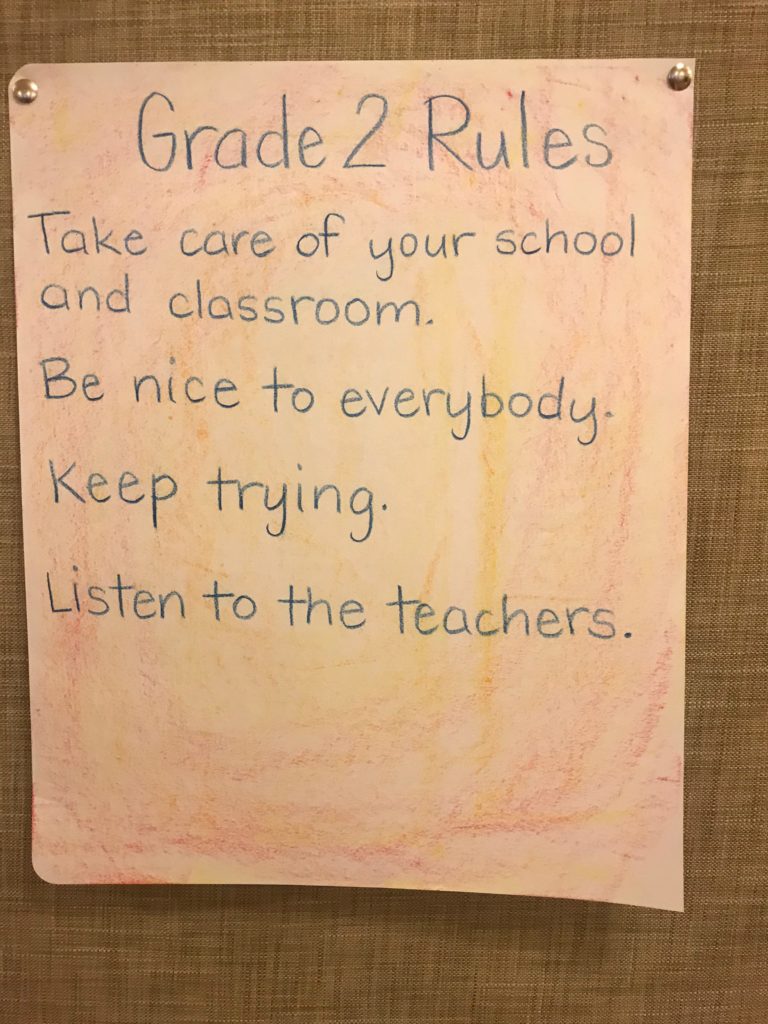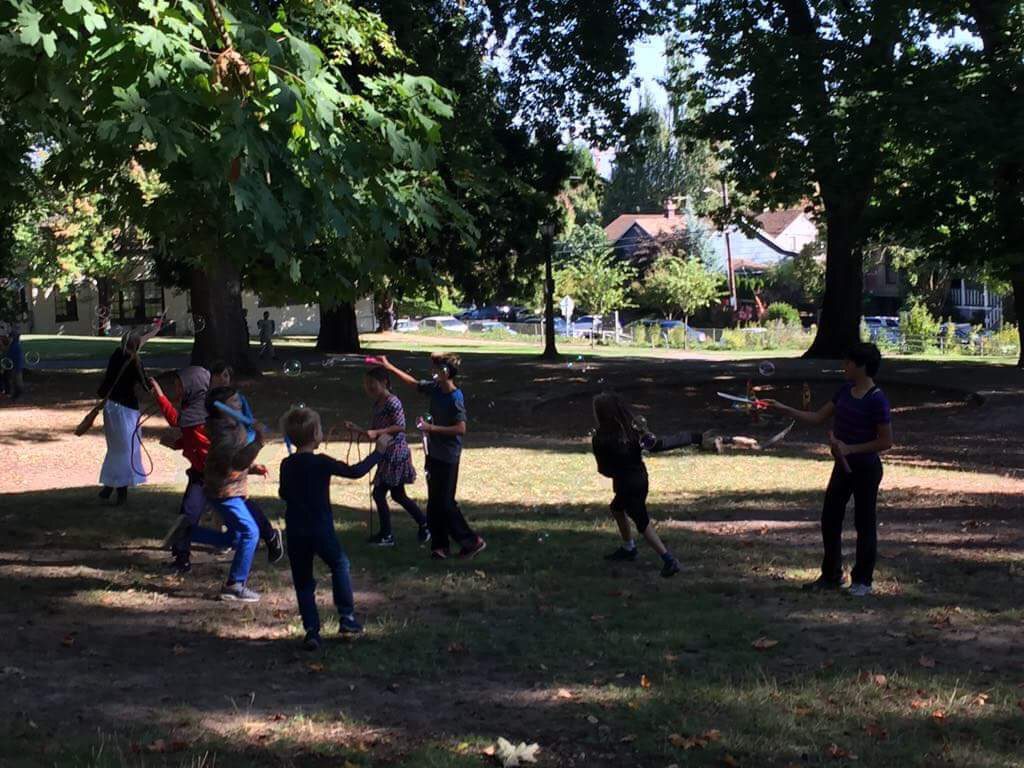I swear, there’s something about school year time . . . it goes by so quickly! At the same time, it seems like it was MONTHS ago that I wrote my last post about Waldorf 2nd grade math and our hopes and dreams conversation. Here’s an update . . .
Hopes and Dreams
After our last class discussion about our hopes and dreams for the year, we came back to the conversation as a class and talked about “things we’ll need to remember” or “rules” we might have to help us make sure our hopes and dreams come true. It was a lively conversation and I could tell that my 2nd graders relied a lot on what they knew to be good, respectful rules. They said things like “Be nice.” “Listen to the teacher.” “Include everyone.” It was very sweet and much easier than the conversation will be later in the upper grades.
Interestingly, my 2nd graders had no difficulty understanding that recess is a time when they are learning a lot. They were full of ideas about all of the important lessons they learn during recess.
As I mentioned in my last post, my goal was to help the students find three or four over-arching, very broad rules that would help them know how to behave at school. This way I could easily and liberally refer to the rules when students were following them (or not.) I hoped to steer their thoughts into rules about respecting yourself, respecting others and respecting the environment.
We ended up with four rules and I may be biased, but I think they are adorable and absolutely perfect.
- Take care of your school and classroom.
- Be nice to everybody.
- Keep trying.
- Listen to the teachers.
I made a couple of signs and posted them inside and outside the classroom.
My intention is to refer to these rules frequently and thereby give these abstract rules some concrete meaning. As learning moments have come up, I have tried to be as positive as possible, CONTINUALLY pointing out that the 2nd graders are so good about following their rules. Even when they falter, I often say something like, “Wow, this is surprising. Usually you all listen to your teachers so well but today you have been chatting . . . ”
I also tell the 2nd graders stories about other (anonymous) students I have taught in the past who have made big mistakes (today it was about someone pulling the chair out from underneath another student). This has the dual effect of letting them learn from my previous students’ mistakes, while also inspiring them with the vision that they are the hardest-working, most caring, most creative group of students I’ve ever taught. That little bit of inspiration goes a long way.

Math Block
I am thoroughly enjoying this math block, though it is turning out much differently than I expected.
In my summer training I was taught to tell the students a story to convey the idea of place value. Monica Marshall was our instructor and she told us about the story she has told for years, that many teachers have adopted. Her story is about Fox Boy, a young Native American boy who occasionally has tantrums (which she called “the ha-ha’s”). The other members of the tribe watch him have his fits and are convinced he’ll never become a hunter. (Apparently her Fox Boy story is loosely based on a book of the same title, though she does not at all suggest that you need the book to use the story.)
Fox Boy tries to collect shells, but cannot hold more than 9 in his hand. Every time he tries to add the 10th they all drop out of his hand and he is overcome with “the ha-ha’s.” The story becomes more elaborate as Fox Boy uses a basket (10s) and a backpack (100s) and so on.
- the hand — 1’s
- the basket — 10’s
- the sack — 100’s
I liked the idea of this story, but I also wanted to incorporate the ideas I’ve learned from my favorite developmental math book. So I started us off with a story and then quickly moved to other tools and strategies to understand place value.
For the past two weeks, our primary tool has been the 100s Chart and I’m astounded with how quickly this tool has helped my students to understand double-digit math. I spent a couple of days introducing the chart and helping the students to see the patterns within it. It helped that we did some work with the 100s chart last year. (Make sure to choose a chart that uses the numbers as you write them. My students knew that the number 1 could be formed in different ways but the curved bottom of the number 9 on our class chart threw them off.)
They quickly saw that anytime you jump down, you are going up by 10. And anytime you jump over, you are going up by 1. With these two ideas in mind, we can do all kinds of problems!
This week we’ve been talking about how you can count by 10s starting at any number. If you can count 20, 30, 40, and so on; you can also count 24, 34, 44, and so on. This has helped the students to use the 100s chart that is “in their heads” to solve math problems. I’m pleased to say that most of the 2nd graders can solve problems like 34 + 20 or 44 + 12, with the help of a 100s chart. For now I’m avoiding problems that have us jumping to the next row of the chart (which is essentially carrying.)
I’m completely happy with this work and the progress that the 2nd graders are making, though I confess that our work has strayed far from the story content that is really the hallmark of the Waldorf approach. I could never sacrifice story-time, though, so our daily stories have been purely seasonal, disconnected from the academic content. I’m quite satisfied with this as stories created to bring math content are never very satisfying. Instead, my stories have been about knights, princes and dragons, as we are in the season of St. Michael. In my opinion, during a math block, a story just for the sake of the story is definitely the way to go. Many of my stories have come from The Book of Dragons by O. Muiriel Fuller and a selection of Michael stories from my treasure trove of files. They say that they’re from Key to the Kingdom, but I have that book and haven’t found these stories in it. I’ll share them as I am able.
We have one more week of math and during this last week my plan is to connect this work back with our place value umbrella story, extend their thinking into hundreds and beyond, and do more work with subtraction. I feel really good about the groundwork that will give us content to practice after we switch to a language arts main lesson block.
Practice Classes
Like many Waldorf teachers, I find my daily main lesson to be the fun part of teaching and lesson planning. The lessons seem to build upon each other in a natural, interesting way. The content is always new and (usually) exciting and it taps into our love for learning new things. For this reason, I like (and actually look forward to) planning my daily main lesson. It’s the important stuff that is top-of-mind when I think about my teacher prep.
The opposite of this are the mundane practice classes. I, and many other teachers I know, often have trouble breathing life and enthusiasm into those practice lessons, which are also SO necessary. They don’t draw our interest in the same way that the fascinating new main lessons do, but they are absolutely essential for building skills.
I always suggest that teachers find a strong rhythm to help make those practice classes easier to plan and more productive. Luckily, my 2nd grade schedule is very rhythmic. Though my students have subject lessons during those prime pre-lunch periods, I have them every day right after lunch and at the end of the day. I’ve managed to establish a rhythm during that time and my hope is that rhythm will be the key to helping those topics take hold. So far so good!
The primary work of this time, during our math block, is language arts. During those two classes at the end of the day we are doing the following:
- Read-to-Self Time. During this time the students read from their book boxes. The primary goal of this time is to build stamina for independent reading, so teachers can work with small groups of students. So far, this approach has been met with rave reviews from teachers, students and parents. I plan to write a dedicated post soon.
- Phonics practice. We review a phonics rule, write a sentence and draw a picture that uses it in our phonics books.
- Kid writing. This is another activity that has been fantastic for skill-building that deserves its own post. Coming soon.
- Form drawing. We have a new drawing every week. Monday we practice in movement, Tuesday on paper, Wednesday in our main lesson books.
In my summer training, our instructors mentioned that Steiner had far less to say about 2nd grade than many of the other grades. When I heard this, I confess, I felt a bit slighted. Can we give the 2nd graders their due?
But as the year has progressed, I totally understand. The 2nd graders are SO busy and their skills are developing SO quickly, there’s hardly time to think about anything else. All we need is the contrast of the saints and the fables. The rest will work itself out with phonics rules and mathematical concepts.
And, of course, each other. Our classmates help us learn so much!




Leave a Reply